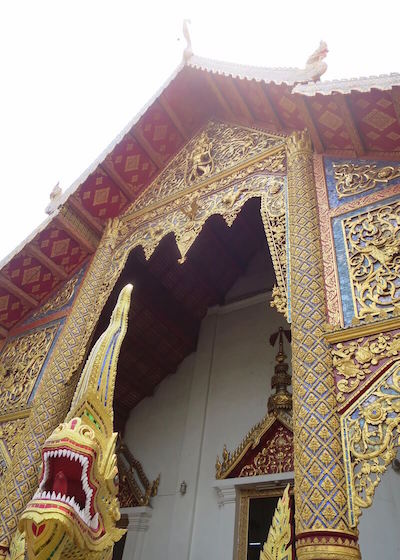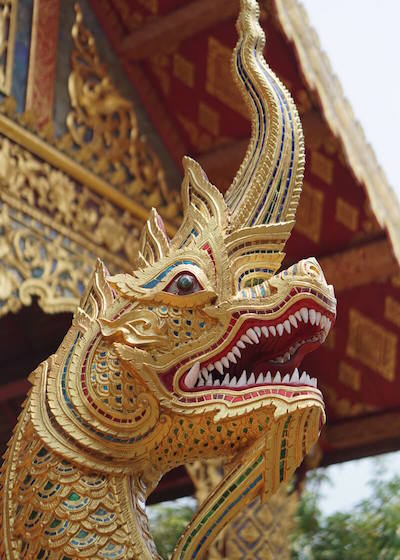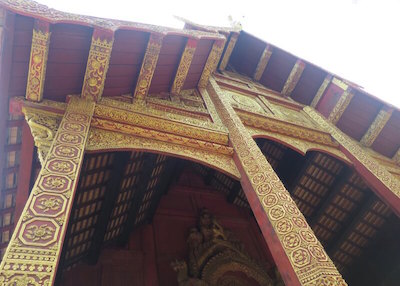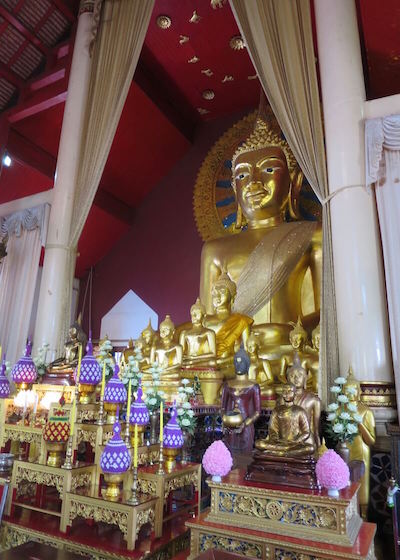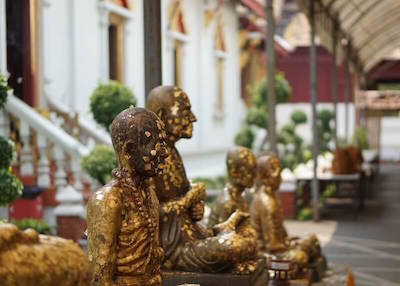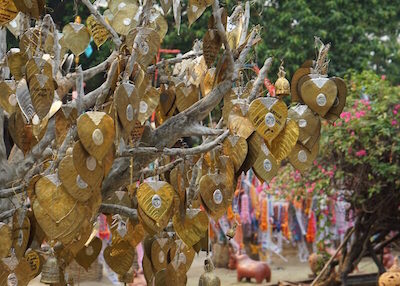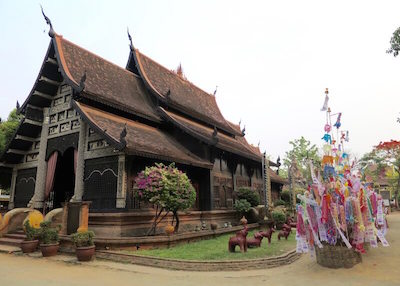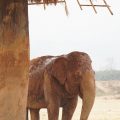Chiang Mai temples play a huge role in giving Thailand’s Ancient City the charm that it has. With over 300 temples in Chiang Mai, it is no wonder that a popular thing to do in Chiang Mai is to go temple hopping! In Thailand, you can tell the significance of an area by the number of temples you see. That’s because the construction and maintenance of temples rely solely on donations.
Chiang Mai’s history
There’s rich history in Chiang Mai and beautiful stories about the Lanna kingdom. What’s interesting is that the locals are very proud of their history. Often, they make casual references to their past as if it’s a natural occurrence in their daily lives. Hence, their deep respect for culture and tradition makes me love Thailand so much more than I currently do.
Every temple I visited left me curious about all that I saw. The architecture, the details in the murals, everything. What was it like to build this beautiful wat? What was it like to be alive during the period when the kings were ruling Chiang Mai? Every moment, every temple visit piqued my curiosity, and I was left in awe.
What’s a chedi? Say wat?! Check out this website for more temple talk!
Wat Chedi Luang Varavihara

The majestic Wat Chedi Luang
Wat Chedi Luang is number one on most must-see temple lists, and yet I almost missed the chedi! Why? Because I visited the temple complex in the morning and didn’t think to wander in the premise! I blame the sweltering heat for my inability to think straight; it was a hot day.
Of course, I got lost in the Sunday night market (surprise surprise) later that day and stumbled upon the chedi.

Notice Chedi Luang in the background? I have no idea how I could have missed this!
Anyway, back to more interesting topics. Wat Chedi Luang was built during the reign of King Mengrai in 1481. The chedi was destroyed in the 1500s due to a natural disaster. When restoration on the chedi was completed, it became one of the largest buildings in the Lanna Kingdom.

Chiang Mai’s protector
My intention for this photo was to capture the sunset; that’s it. Only months later did I realize that I took a picture of a famous tree. Legend has it that this tree was planted by King Chao Kawila sometime in the 1800s to protect the town. The superstition is that if this tree should ever fall, a great catastrophe will happen to the city.

Phra Chao Attarot
The wiharn houses Buddha called Phra Chao Attarot. This Buddha stands in a posture to “prevent relatives from fighting.”
The legend is that there was a water shortage among a river that ran between two kingdoms. The two kingdoms, both related to Buddha were going to fight over the water scarcity. But Buddha intervened and asked, “What means more to you, water or relatives.” I suppose the lesson here relates to the adage; “Blood is thicker than water.”
TEMPLE DOGS ARE BATSH*T ANGRY!
You will hear about stray dogs and how they might bite you but might not think twice about this warning. I didn’t. Most of the time, the dogs just chill and sleep in the shade and let you be. I had a scare with a stray dog when I was in this temple and he/she came pretty close to biting me. I remained calm in hopes that the dog could not sense my fear, but it was a frightening moment for me. Eventually, the dog left me alone, but I have no idea what provoked it to act in an aggressive manner. Maybe because I was one of the few visitors onsite in the evening? Who knows? Moral of the story is to be careful; these temple dogs have anger management issues.
On the bright side, I caught a lovely photo of the temple as the sun was setting.

Beautiful temple at sunset
Wat Pan Tao

Wan Pan Tao
Wat Pan Tao is one of the few temples constructed from teak wood panels. In 1846, Chao Mahawong, the ruler of Chiang Mai built this temple to be his royal palace. Only later did it convert to a monastery.

Look closely at the pelmet, and you’ll see a peacock guarding a sleeping dog. What a beautiful way to create something that lives forever
Although I didn’t notice this when I visited the temple, the mural on the entrance way showcases a peacock standing over a dog. The dog represents the astrological sign of the former royal resident’s birth year. The peacock, a royal symbol in Lanna culture, is guarding the sleeping dog. What an interesting and symbolic way to reflect a personal characteristic in architecture.
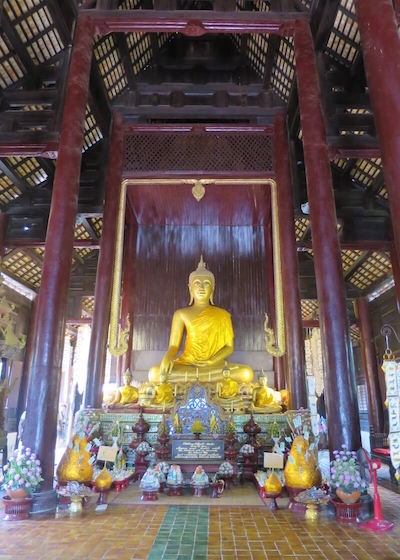
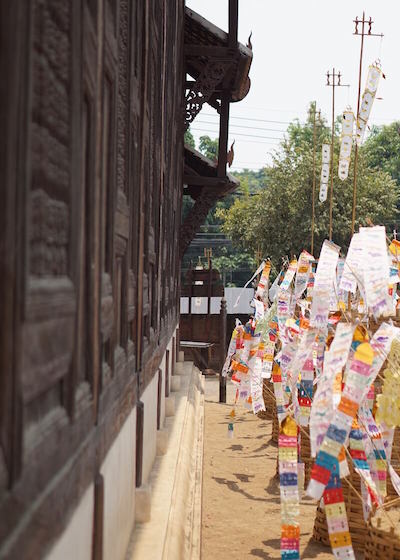
There’s also a human-made river and newly restored Chedi as you wander behind the temple
I loved this temple and lost track of time during my visit. Wat Pan Tao is not busy, leaving me alone with my thoughts. I remember feeling as if I found myself again after a few years of losing myself to societal norms.
Wat Phra Singh Woramahaviharn

The entrance of Wat Phra Singh
Wat Phra Singh is one of the most famous temples in Chiang Mai and has many sculptures dedicated to Buddha. The most prominent statue in this temple is Phra Sing Buddha, also known as Lion Buddha. Rumour has it that Phra Sing Buddha was brought over from India in the 1300s.
The temple has many shrines, a chedi, and breathtaking detail in the architecture. It’s easy to see how one can spend a few hours in this temple complex.

Ho Trai
Ho Trai is a temple library that demonstrates the beauty of classical Lanna architecture. In Thailand, Ho Trai is known to be one of the most beautiful temple libraries in the country.

These pagodas used to be white
While the pagodas next to the Wihan Lai Kham are now gold in color, I noticed that the pagoda used to be white! It must not have been long ago that these pagodas became gold.

Wihan Lai Kham contains Phra Singh Buddha
No one in Thailand knows the origins of the popular Phra Singh Buddha image. Many people wonder who the artist is behind this image because it has no resemblance to Buddhist statues in Sri Lanka.

Wihan Luang in Wat Phra Singh
Wat Lok Molee
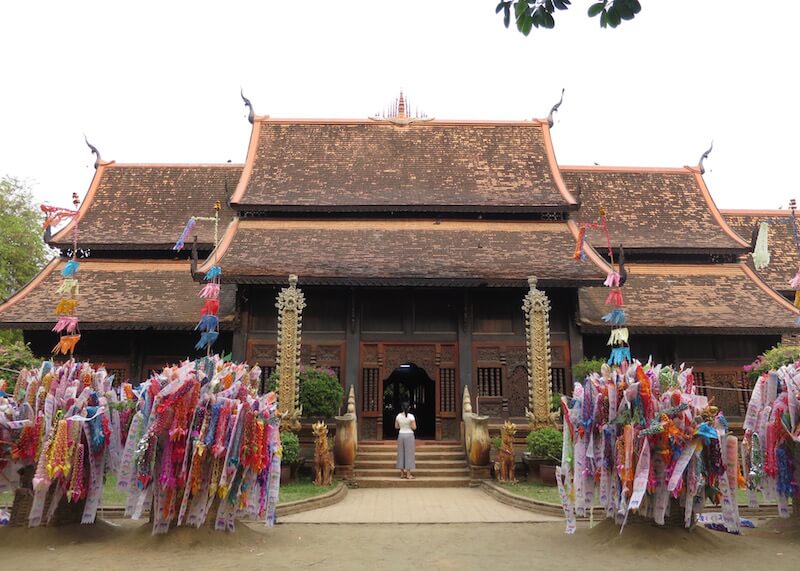 Wat Lok Molee is likely built in the 14th century
Wat Lok Molee is likely built in the 14th century
Little is known about Wat Lok Molee since there is no record of this wat. Wat Lok Molee is probably constructed in the 14th century by the ruler of the time. Behind the wiharn is a large chedi that towers the rest of the temple. The chedi contains the remains of Lanna King Muang Ketklao and his wife, Queen Visuddhadevi.
This overlooked temple allowed me to explore the temple grounds in solitude because there were no crowds!
Wat Raja montean

Wat Raja montean
Discovering this wat was a lovely surprise for me since it was not on the itinerary. It must have been one of those moments where I focused on crossing the street and saw this beautiful temple when I looked up. Since this temple is not popular, the beauty and seclusion of this wat make it a lovely place to visit.

Breathtaking!
I think my discovery of this temple must have gone something like this:
Ahhhhhhh must dodge traffic and cross the busy road without getting hit. *Looks up to see beautiful temple*

The entrance way to Wat Rajamontean, sans power lines
This unpretentious temple faces a busy street, with power lines running right in front of it. Hence, taking a beautiful photo of the entrance way was not easy, but that’s where I needed to be creative.
Other Chiang Mai temples I wish I visited
- Sri Suphan: Reminds me of the temple from Chiang Rai
- Wat Phra That Doi Suthep: It’s about one hour from Chiang Mai, but I hear it’s beautiful!
- Wat Umong: aka the ‘jungle temple’? Sounds interesting. This wat is close to Doi Suthep
Chiang Mai Temple hopping tips
- Wear proper clothing. While no one will ever call you out on inappropriate attire, but come on, be respectful to the culture. I’m thinking about these women in crop tops and miniskirts, taking self-absorbed selfies at the temples. Terrible. Terrible people. Don’t be like them!
- While most temples are free to visit, some requests for small donations (about 40 baht).
- It will be hot, very hot. Bring lots of water and use 7-eleven as places to cool down/recharge on food. 7-eleven has cheap milk tea to cool down with!

Wat Chai Prakiat
As I look back on my visit to Chiang Mai, I think the city itself isn’t spectacular. What made my trip memorable were the little things – the incredible food, the beautiful wats and the rich history. The slow pace of the city gave lots of room for introspection; I guess that makes it hard not to feel inspired. Either way, I’ll always remember this town as the place where I found myself again. And I brought her back to Canada and made a solemn vow never to let her go (haha).

Why hello true me! Don’t run away again, ok? Okay

